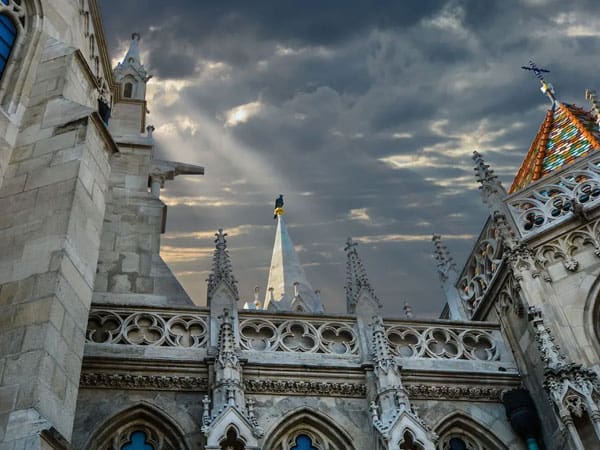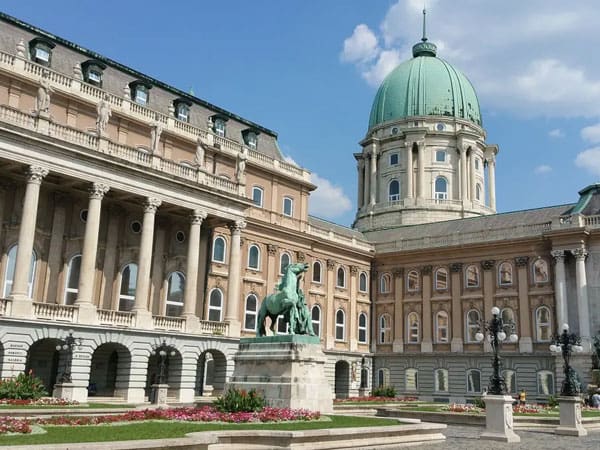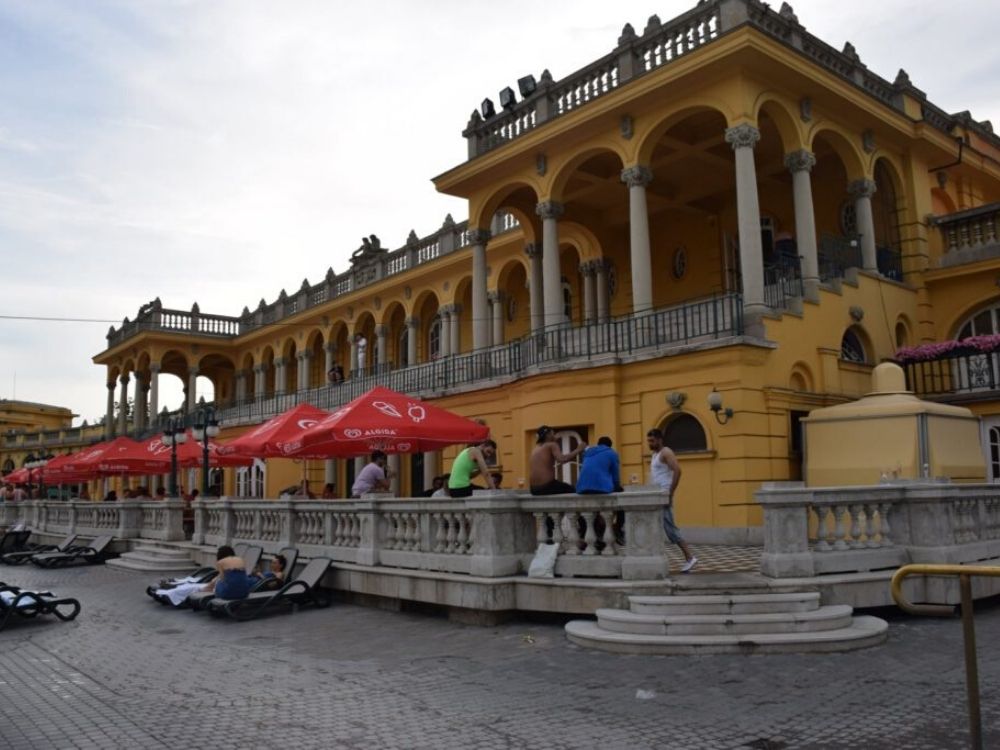Explore

A crossroads between East and West, Budapest has developed a blended culture unmatched anywhere in Europe. Budapest is actually two separate cities – Buda and Pest – that were combined into one which, in part, contributes to its unique character. Budapest has several nicknames, but its designation as the ‘City of Spas’ is perhaps its most famous.
A Brief History
Established as two separate cities—Buda on the west bank of the Danube and Pest on the east—the area became a significant Roman settlement called Aquincum in the 1st century AD. Over time, it witnessed the rule of various civilizations, including the Romans, Celts, and Lombards. In the 9th century, the Magyars, a Hungarian tribal alliance, settled in the Carpathian Basin and eventually established the Kingdom of Hungary.
The Mongol invasion in 1241 inflicted severe damage on Buda, but the city recovered and became the capital of Hungary under King Matthias in the 15th century. During the Ottoman Empire’s expansion in the 16th century, Budapest fell under Ottoman rule for 150 years, resulting in the construction of iconic thermal baths like the Rudas Baths. The Habsburgs later recaptured the city, setting the stage for a period of Austro-Hungarian rule.
In the 19th century, Budapest underwent significant urban development, merging the distinct cities of Buda, Pest, and Óbuda into one metropolis in 1873. The construction of grand boulevards, architectural landmarks like the Hungarian Parliament Building and Buda Castle, and the development of thermal spas contributed to Budapest’s transformation into a vibrant European capital. The city played a role in the revolutions of 1848 and 1956, seeking greater political freedoms and independence.
Today, Budapest stands as a cultural, economic, and political hub in Central Europe. Its rich history is reflected in the blend of architectural styles, from the Gothic and Ottoman to the Art Nouveau and modernist influences. The thermal baths, Danube River, and the UNESCO-listed Buda Castle District are just a few highlights that showcase Budapest’s enduring charm and historical significance.
 Matthias Church
Matthias Church
This ancient church is more than seven hundred years old, and was the venue for many royal coronations including that of Habsburg’s last King, Charles IV in the early 20th century. The Church is named after Hungary’s important King Matthias who was married here twice.
 Széchenyi Bath & Spa
Széchenyi Bath & Spa
This is the largest medicinal bath in Budapest, and one of Europe’s largest public baths. Located in City Park, the Széchenyi Baths boasts 18 pools, 15 of which are spring-fed thermal pools. Definitely worth spending a couple hours or even half a day soaking up the experience here.
 Buda Castle
Buda Castle
Home to the Budapest History Museum and National Gallery, the Royal Place was the first royal residence built in the area after the Mongolians invaded in the 13th century. It was then expanded to become the largest Gothic-style castle of its time. Unfortunately, the original palace building was destroyed, but in the 1700s,a Baroque-style building was constructed.
 Great Synagogue
Great Synagogue
This is the biggest synagogue on the continent, and the 2nd biggest in the world, with a capacity of three thousand people. The architecture reflects neo-Moorish design taking five years to build with construction completed in 1859. Visits require 24-hour advance booking.
 Ruin Bars
Ruin Bars
Ruin bars are all the rage in Budapest being built in Budapest’s old Jewish quarter in the ruins of abandoned buildings, stores, and lots. This neighborhood was left to decay after World War II, so it was a perfect place to develop an underground bar scene to bring back the neighborhood.
 Hungarian cuisine
Hungarian cuisine
Hungarian is actually quite rich, varied, and delicious contrary to popular belief, as many wouldn’t think of Budapest as a food destination. But there’s plenty of delicious foods to be had.

Budapest is known for…
Gulyás, or goulash is the national dish of Hungary and in Budapest it’s quite awesome. Goulash is essentially a meat and spice stew, and can be served alone, as a soup, or over noodles.
 Don’t miss out on…
Don’t miss out on…
Chicken Paprikash – One of the most popular dishes in Budapest, chicken paprikash is chicken coated in a sour cream sauce and very heavy on the paprika.
Hungary uses the Hungarian Forint (HUF). While many places accept credit cards, having some cash is advisable, especially in local markets and smaller establishments. ATMs are widely available.
While many people in Budapest speak English, learning a few Hungarian phrases like “hello” (szia), “thank you” (köszönöm), and “please” (kérem) can enhance your experience and show appreciation for the local culture.
Budapest is enchanting at night, with beautifully illuminated landmarks along the Danube. Consider taking an evening river cruise to witness the city’s stunning lightscape.
Virtual Tours
Budapest in 4K
Budapest, Hungary 4K Fly Aerial
One Day in Budapest
The History of Budapest
Best Baths in Budapest, Hungary



Jack’s Favorite Moment
Baths of Budapest
Ah Budapest. There is no place quite like it. Being a crossroads between east and west, Budapest has developed a unique character with a blended culture unmatched anywhere in Europe. Budapest is actually two separate cities – Buda and Pest – that were combined into one which in part contributes to its unique character.
In addition to the hybrid architecture that blends so seamlessly well together, Budapest is world renowned for something else; its extensive network of thermal baths. Budapest has several nicknames, like the ‘Paris of East’ or the ‘Pearl of the Danube’, but its designation as the ‘City of Spas’ is perhaps its most famous.
Budapest has held the title ‘City of Spas’ since 1934, and boasts more thermal and medicinal water springs than any other capital city in the world. The Baths of Budapest were enjoyed by the Romans as early as the 2nd century AD. It was during the Turkish occupation of Hungary in the 16th century that the bath culture really started flourishing, and today there are 118 springs in the city, providing over 70 million liters of thermal water a day. Visitors can take a dip in one of the city’s 11 public baths to enjoy a unique spa experience and bathe your worries away.
Make your choice wisely though as all the baths in Budapest are different, each with a unique flare. Perhaps the most famous, and the one I visited on my last trip in 2016, are the Szechneyi Baths. This is the largest medicinal bath in Budapest, and one of Europe’s largest public baths. Located in City Park, the Széchenyi Baths boasts 18 pools, 15 of which are spring-fed thermal pools. When I first walked into the complex I was flabbergasted. The sheer size of the compound, the number of pools, and the ornate architecture was something I had never before seen in a bathhouse or spa. It was almost like walking into a neoclassical palace in the middle of the city.
In addition to its gigantic size and style was the abundance of amenities, unique areas of water, and the myriad of activities. You have your main pools, the sulfur pools, ice cold plunge pools, steam rooms, showers, more pools, more steam rooms, massage parlors, exercise equipment, and areas for dining and entertainment. It really is a full-on Disney World for the bath crazy Hungarians. You could easily spend all day here, which many do, but if you can’t do that I would at least spend a few hours to fully soak up the experience.
Another feature that struck me as different was the efficiency and technological advancement of the place. Hungary is not the richest country in Europe, not even close, in fact there’s many places of the country that are impoverished, but the technology and workings of the baths are on a whole other level. As soon as you walk in you’re given an arm band that has a built-in chip which gives you access to all the areas of the bath house that you purchased for that day. It also gives you entry into a single locker into the underground locker room. All you do is walk up to the locker and put your armband up and it pops open. You can do everything in the complex with the armband so there’s no need to carry keys or money around with you. This is a huge convenience.
We spent 4-5 hours soaking up the sunny rays, going from pool to pool, chatting with locals, and we even had an authentic Thai massage. Next visit I plan to spend more time checking out the other main baths of the city.
It’s safe to say that if you’re in Budapest visiting you would do well to check out one of the many baths the city has to offer. It’s compulsory if you want a well-rounded experience!

Jack Bauman
Founder of Guidester
DISCOVER
Interactive Maps
Enjoy the views from Castle Hill
Check out the inside of Parliament building
Explore Hero’s Square
TESTIMONIALS
What Our Clients Say…
LET US HELP
Choose The Service that Works Best for You!
Guidester provides several options to choose from to best suit your traveling needs. Choose one or choose all!
Get a personalized digital travel guide for Europe, curated by locals. It downloads to your phone and offers top recommendations for each destination.
Guidester simplifies international travel by assisting you with itinerary planning, hotel and airfare bookings, and tours. We also help you avoid errors and common pitfalls.
Join the Guidester Founder on a hand-crafted small group tour, exploring off-the-beaten-path destinations and experiencing unforgettable adventures.
…or click here to explore more European destinations!

